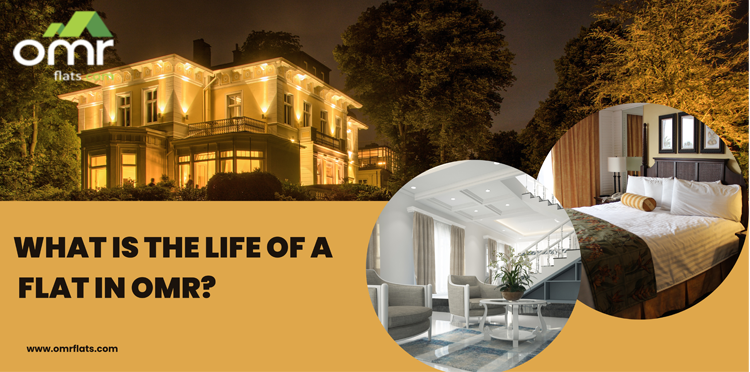What is the life of a flat in OMR?

As urbanisation and population density rise in Chennai, flat living is growing in popularity. However, are you wondering what is going to be the lifespan of your apartment?
Any concrete structure should ideally last between 75 and 100 years. Structures nowadays are far more robust than they were in the 1900s. However, it's generally accepted that apartments last between 40 and 60 years on average. With ageing, everything, living or nonliving, ages, even your dwellings. The building eventually begins to lose its external polish and structural integrity.
A house is a construction composed of various components that deteriorate over time. When combined, the effects of human use and the environment can cause harm. Aside from this, apartments with bad design deteriorate more quickly.
Items that are used frequently, such as electricity cables, water pipes, and other related services, eventually deteriorate and wear out. In addition, a home may age prematurely due to window and door openings, subpar construction, painting, waterproofing, and plumbing layouts.
Factors that determine the lifespan of a building
The longevity of a structure is determined by a number of things. These could involve the building's maintenance, the use that the structure sees, or the materials and techniques used during construction.
In our state, a high-quality building needs to be shielded from all weather conditions, including intense heat and heavy monsoon. Because soil and weather conditions also have a significant impact on a building's longevity. The lifetime of the building is also influenced by other elements, such as the calibre of the construction.
Did you know that concrete, steel, iron, brick, stone, and wood are the materials that survive the longest in construction? Naturally, the methods employed and the expertise of the craftsmen and building team that developed the structure all play important roles.
Tips to increase the lifespan of your flat
- It's crucial to clean frequently and to separate and dispose of waste materials properly. It is imperative to maintain furniture and paint regularly, as well as conduct an annual inspection for termites, wet walls, and plinths.
- The longevity of the construction is mostly determined by the weather. For example, towns like Chennai that are close to the coast deal with extreme heat and humidity. The external facade of the structure may deteriorate as a result.
- High rainfall regions are more likely to experience water seepage, moisture, and concrete structure cracks. This has a significant impact on the structure's average age as well. Make sure your property is well-prepared to withstand the weather.
- Select a sustainable material that will work well for the interior design of the house. Purchasing locally constructed goods is recommended since they are made with the local environment in mind.
- If you live near the ocean, stay away from employing metal parts in your property as the salt in the sea wind can damage manufactured façade materials and railings.
- Using the proper materials during construction can significantly raise the average age of your building. After construction, appropriate upkeep and routine maintenance can prolong the health of your home.